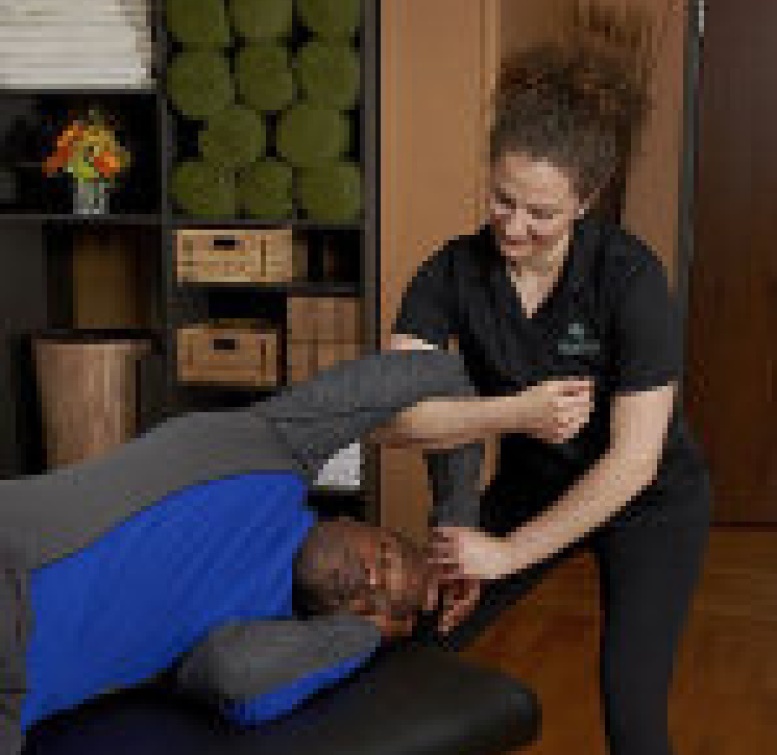What is a fascial stretch therapist?

I am now a level one fascial stretch therapist. If you are curious what Fascial Stretch is, take a look at this article in the Toronto Star.
Life is guaranteed to bring a full range of aches and pains, some of which can be so serious that they affect both the ability to move freely and quality of life. In an effort to help chronic pain sufferers, new techniques like fascial stretch therapy have been developed.
Practitioner Jacqueline Mirkopoulos uses her expertise in kinesiology, massage therapy and fascial stretch (fascial refers to fibrous connecting tissue) to treat patients at her Hands on You Therapeutic Clinic, founded in 2009.
Q: What is a fascial stretch therapist?
A: A fascial stretch therapist is a health professional who deals with mobility and chronic pain issues. This is a relatively new form of treatment that involves the therapist performing assisted stretching techniques with a client on a treatment table or floor. Comfortable straps help stabilize the limb or part of the body that is not being stretched in order to facilitate complete relaxation and to enhance the effectiveness of the stretches.
Q: Why did you decide to pursue this specialization?
A: As a registered massage therapist, I am always looking to better myself as a practitioner by combining complementary techniques to provide my clients with the best care. A good colleague of mine, Kevin Darby from Darby Training Systems, had told me about this technique and offered to give me a stretch. Right away, I said, “I have to learn this.”
Q: What are the main medical/health conditions you treat?
A: This is a very powerful therapy and I have treated many conditions such as disc herniation, facet joint dysfunctions (when two discs in the vertebra aren’t articulating properly), chronic headaches, plantar fasciitis (a common issue for runners or people who stand on the arch, involving serious pain in the arch of the foot) and pinched nerves. The majority of my clients really benefit from this technique, restoring, improving and maintaining mobility as well as general well being.
Q: What is the most challenging part of your profession?
A: The most challenging part really is educating people about fascial stretch therapy (FST) because it is relatively new. Most people think of traditional stretching as something that is painful and they are often scared at first. FST is really the opposite. It is a pain-free, relaxing approach that has endless benefits. Another challenge is getting people to understand that pain and chronic problems are not something that can be fixed and cured overnight. Just as it takes times for things to build up in the body and cause problems, it takes time to peel away at the layers of damage.
Q: What is the most rewarding part of your profession?
A: The most rewarding part is when someone gets off my treatment table and says that they feel better and are pain-free. I have had clients tell me that I have completely changed their lives — that they thought they would be in pain forever. I do not believe that anyone should have to settle for living with pain every day. When I can help a client return to normal function and give them a higher quality of life, nothing makes me happier.
Originally published at THESTAR












